- Importance of Plum Pruning
- 1. Tree Health
- 2. Fruit Production
- 3. Tree Shape and Size
- 4. Disease and Pest Management
- 5. Training Young Trees
- Stone Trees vs Seed Trees: Key Differences
- Pruning Techniques for Stone Trees
- 1. Pruning for Structure
- 2. Thinning Out
- 3. Heading Back
- 4. Training Young Trees
- 5. Pruning for Fruit Production
- 6. Timing
- Pruning Techniques for Seed Trees
- 1. Prune in the dormant season
- 2. Remove dead or diseased branches
- 3. Thin overcrowded branches
- 4. Maintain a central leader
- 5. Promote lateral branching
- 6. Avoid excessive pruning
- 7. Clean and sanitize pruning tools
- 8. Seek professional advice if needed
- When to Prune Stone Trees
- Dormant Season
- Avoid Pruning During Extreme Cold or Heat
- Prune After Harvest
- Regular Maintenance Pruning
- Consult a Professional
- When to Prune Seed Trees
- Common Pruning Mistakes to Avoid
- 1. Pruning at the Wrong Time
- 2. Over-Pruning
- 3. Incorrect Pruning Cuts
- 4. Neglecting Thinning
- 5. Ignoring the Central Leader
- 6. Failing to Remove Suckers and Watersprouts
- 7. Neglecting Proper Tools and Equipment
- Question-answer:
- Why is it important to prune plum trees?
- When is the best time to prune plum trees?
- What are the differences between pruning stone trees and seed trees?
- How should I prune a young plum tree?
- Can pruning plum trees help prevent pests and diseases?
- What are some common mistakes to avoid when pruning plum trees?
- Video: Rejuvenating An Old Plum Tree With Hard Pruning
Pruning is an essential step in maintaining the health and productivity of plum trees. Understanding the differences between stone trees and seed trees can help ensure that you are pruning your plum trees correctly and effectively.
Stone trees, also known as freestone trees, are characterized by their ability to easily separate the flesh (the stone) from the pit, or seed. Pruning stone trees involves shaping the tree to encourage airflow and sunlight penetration, as well as removing any dead or diseased branches. This type of pruning helps maintain the overall health of the tree and promotes the development of high-quality fruit.
Seed trees, on the other hand, have flesh that clings tightly to the pit, making them more difficult to eat or process. Pruning seed trees involves both shaping the tree for better airflow and sunlight, as well as thinning the branches to promote the development of larger and more flavorful fruit. It is important to avoid heavy pruning of seed trees, as this can reduce fruit production and quality.
Proper pruning techniques for plum trees, both stone and seed, include removing any crossed or rubbing branches, being careful not to remove more than one-third of the tree’s overall growth in a single year, and making clean cuts to prevent disease. It is also important to prune in the late winter or early spring when the tree is dormant to minimize stress and promote new growth.
By understanding the differences between stone trees and seed trees and following proper pruning techniques, you can help your plum trees thrive and produce abundant, high-quality fruit.
Importance of Plum Pruning
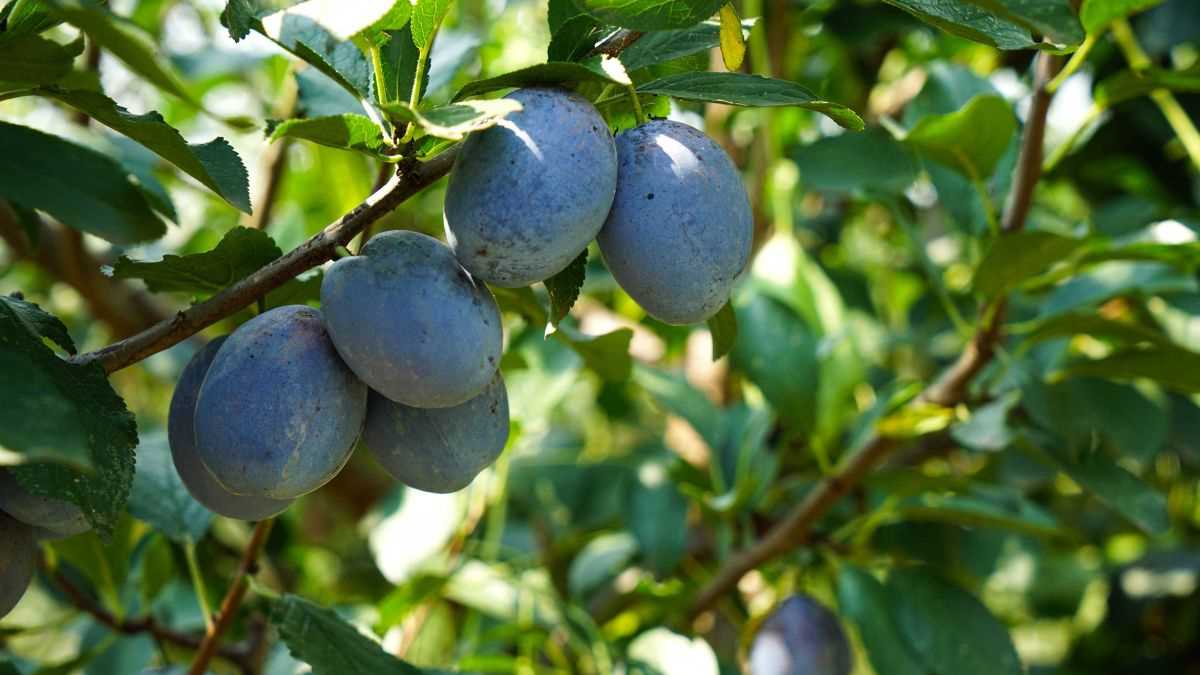
Pruning is an essential part of plum tree maintenance and plays a crucial role in promoting tree health, improving fruit production, and maintaining a desired tree shape. Proper pruning techniques help optimize the growth and development of plum trees, ensuring their longevity and productivity.
1. Tree Health
Regular pruning helps maintain the overall health of plum trees by removing dead, damaged, or diseased branches. These branches can serve as entry points for pests and diseases, compromising the tree’s health and productivity. Pruning also encourages the growth of new, healthy branches, contributing to the overall vigour of the tree.
2. Fruit Production
Pruning is essential for maximizing fruit production in plum trees. By removing excess branches, the tree’s energy is focused on the remaining branches, resulting in larger and better quality fruits. Pruning also improves air circulation and sunlight penetration within the canopy, reducing the risk of fungal diseases and ensuring even ripening of the fruit.
3. Tree Shape and Size
Proper pruning helps control the shape and size of plum trees, making them more manageable and aesthetically pleasing. Regular pruning prevents overcrowding of branches and maintains an open canopy structure, allowing light to reach all parts of the tree. This promotes even growth and minimizes the risk of branch breakage, especially during periods of heavy fruiting or strong winds.
4. Disease and Pest Management
Pruning plays a vital role in disease and pest management for plum trees. By removing overcrowded branches and maintaining proper spacing, airflow is improved, reducing the risk of developing fungal diseases such as brown rot. Pruning also allows for better inspection and identification of pest infestations, making it easier to take timely control measures.
5. Training Young Trees
Pruning is particularly important for young plum trees as it helps shape their growth and establish a strong framework. Regular pruning during the first few years helps develop a well-balanced tree structure, reducing the risk of weak or crossing branches. This early training ensures that the tree grows in a desirable shape and provides a solid foundation for future productive growth.
In conclusion, proper plum pruning is essential for maintaining the health and productivity of plum trees. Regular pruning not only improves fruit production but also helps control tree shape and size, manages diseases and pests, and establishes a strong framework for young trees. By investing time and effort into proper pruning techniques, plum tree owners can enjoy healthy and bountiful harvests for years to come.
Stone Trees vs Seed Trees: Key Differences
- Definition: Stone trees and seed trees are two types of plum trees that differ in how they are propagated.
- Propagation:
- Stone Trees: Stone trees are grown from plum pits or stones. The pits are collected from ripe plums, and the seeds inside are planted to grow new trees.
- Seed Trees: Seed trees, on the other hand, are grown from seeds that develop within the fruit. The seeds are typically extracted from the fruit and planted to propagate new trees.
- Growth Characteristics:
- Stone Trees: Stone trees are known to produce fruit that closely resembles the parent tree. This is because they are grown from the seeds found within the fruit of specific plum varieties.
- Seed Trees: Seed trees, on the other hand, may not produce fruits that are identical to the parent tree. This is because they are grown from seeds that may have cross-pollinated with other varieties, resulting in variations in fruit characteristics.
- Time to Maturity:
- Stone Trees: Stone trees generally take longer to reach maturity and start producing fruits compared to seed trees. This is because it takes more time for the tree to grow from a seedling to a mature tree.
- Seed Trees: Seed trees may mature and start producing fruits more quickly compared to stone trees. This is because they are typically grown from seeds that have already started the germination process.
- Availability:
- Stone Trees: Stone trees are readily available as they can be easily propagated from the pits of ripe plums. They are often sold as young seedlings or bare-root trees.
- Seed Trees: Seed trees may be less commonly available, especially if the plum varieties they originate from are not widely grown or commercially propagated.
- Conclusion: Understanding the key differences between stone trees and seed trees can help plum growers make informed decisions on the best propagation method for their specific needs. Whether it’s the desire for consistent fruit characteristics or the availability of specific plum varieties, choosing the right method can contribute to the success of plum tree cultivation.
Pruning Techniques for Stone Trees
Proper pruning is essential for the maintenance and health of stone trees. By following the right techniques, you can promote their growth, improve their shape, and ensure a bountiful harvest. Here are some techniques to keep in mind when pruning stone trees:
1. Pruning for Structure
When pruning stone trees, it’s important to prioritize creating a strong and balanced structure. Start by removing any dead, damaged, or diseased branches. Also, remove any branches that are crossing or rubbing against each other. These branches can cause wounds, increase disease susceptibility, or create weak points in the tree.
2. Thinning Out
Thinning out involves removing selected branches to improve the air circulation and light penetration within the tree. This technique helps prevent disease development and allows sunlight to reach all parts of the tree. When thinning out, aim to create an open and airy canopy by removing branches that are growing towards the center of the tree or crossing each other. Thin out the tree in such a way that it retains its natural shape and doesn’t become too dense.
3. Heading Back
Heading back is a technique used to control the height and spread of stone trees. It involves cutting the terminal shoots of branches, which encourages lateral growth and stimulates the development of new shoots. Heading back helps maintain the tree at a manageable size and promotes the formation of a balanced canopy.
4. Training Young Trees
It’s important to start pruning stone trees when they are young to establish a strong framework and encourage good branch structure. This process involves the selective removal and redirection of branches to create a well-spaced and balanced canopy. Training young trees helps shape them for optimal growth and ensures easy maintenance in the future.
5. Pruning for Fruit Production
To maximize fruit production, it’s crucial to prune stone trees properly. Pruning helps stimulate the growth of new branches and encourages the formation of flower buds. When pruning for fruit production, focus on removing excess branches to allow enough light to reach the developing fruit. Additionally, remove any weak or unproductive branches to redirect the tree’s energy towards fruit-bearing branches.
6. Timing
The timing of pruning is also important for stone trees. It’s best to prune them during the dormant season, typically in late winter or early spring, before new growth begins. Pruning during this time minimizes the risk of disease transmission and allows the tree to allocate its resources towards healing wounds and new growth.
By following these pruning techniques for stone trees, you can ensure their health, longevity, and productivity. Remember to use proper tools, make clean cuts, and observe the overall health and structure of the tree while pruning.
Pruning Techniques for Seed Trees
Proper pruning techniques are essential for maintaining the health and productivity of seed trees. By following these techniques, you can ensure that your seed trees grow strong and produce high-quality fruits. Here are some important pruning practices to keep in mind for seed trees:
1. Prune in the dormant season
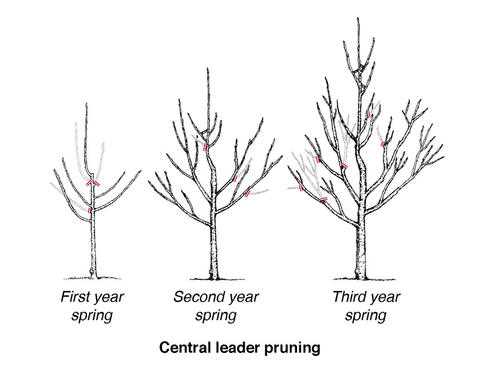
It is best to prune seed trees during their dormant season, which is typically in late winter or early spring. Pruning during this time promotes better healing and reduces the risk of disease and pest infestation.
2. Remove dead or diseased branches
Start by removing any dead or diseased branches from the seed tree. These branches not only affect the overall appearance of the tree but can also harbor pests and diseases, potentially spreading them to the rest of the tree.
3. Thin overcrowded branches
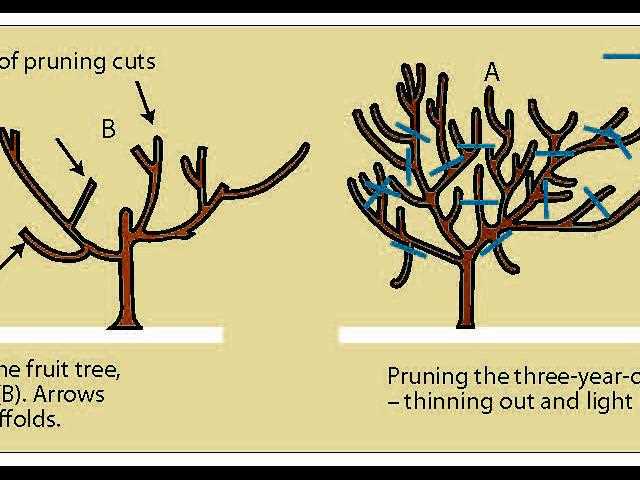
Seed trees tend to have branches that grow closely together, leading to overcrowding. Thinning out these branches will improve air circulation and allow more sunlight to reach the inner parts of the tree, promoting better fruit development.
4. Maintain a central leader
Seed trees should have a central leader that serves as the main trunk of the tree. Identify the strongest, most upright branch and prune other nearby branches to promote the growth of the central leader. This helps maintain a well-balanced and structurally sound tree.
5. Promote lateral branching
Encourage the development of lateral branches along the main trunk to ensure a well-rounded and productive seed tree. Selectively prune branches that compete with the central leader and allow space for lateral branches to grow.
6. Avoid excessive pruning
While pruning is essential, be cautious not to overdo it. Excessive pruning can weaken the tree and make it more susceptible to damage from wind, disease, and pests. Only remove what is necessary and maintain the natural shape and structure of the seed tree.
7. Clean and sanitize pruning tools
Before and after each pruning session, clean and sanitize your pruning tools to prevent the spread of diseases. Use a disinfectant solution to clean the blades and handles of your tools, ensuring that any potential pathogens are eliminated.
8. Seek professional advice if needed
If you are unsure about proper pruning techniques for seed trees or have complex pruning needs, it is advisable to seek professional advice. Arborists and horticulturists are knowledgeable about tree care and can provide guidance tailored to your specific situation.
By following these pruning techniques for seed trees, you can maintain the health and vitality of your trees and enjoy a bountiful harvest of high-quality fruits.
When to Prune Stone Trees
Proper pruning of stone trees is essential for ensuring their health and productivity. Knowing when to prune stone trees is crucial to achieving the desired results. Here are some important factors to consider when deciding on the timing of pruning:
Dormant Season
The best time to prune stone trees is during the dormant season, which is typically in late winter or early spring before the tree starts to actively grow. Pruning during this time helps to minimize the risk of disease and infections, as the wounds created during pruning have a better chance of healing quickly.
Avoid Pruning During Extreme Cold or Heat
It is important to avoid pruning stone trees during extreme cold or hot temperatures. Pruning during these conditions can stress the tree, leaving it vulnerable to damage and infections. Plan your pruning schedule around more moderate temperatures to ensure the best results.
Prune After Harvest
To maintain the health and productivity of stone trees, it is advisable to prune them after the harvest season. This allows the tree to recover from fruit production and prepares it for the next growing season. Pruning after harvest helps to promote new growth and improves the overall structure and shape of the tree.
Regular Maintenance Pruning
In addition to pruning during the dormant season and after harvest, it is important to regularly maintain and prune stone trees. This can involve removing dead, damaged, or diseased branches throughout the year. Regular maintenance pruning helps to improve the tree’s health and overall appearance.
Consult a Professional
If you are unsure about the proper timing or technique for pruning stone trees, it is recommended to consult a professional arborist or horticulturist. They will have the knowledge and experience to guide you in properly pruning your stone trees to ensure their health and productivity.
When to Prune Seed Trees
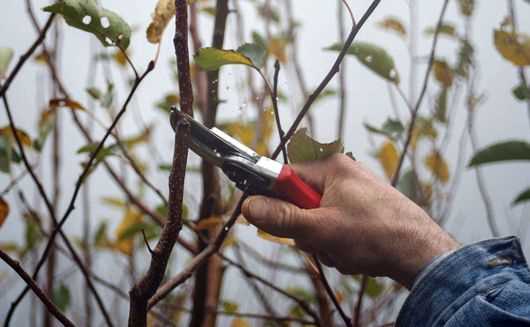
- Prune in late winter or early spring: Seed trees should be pruned during the dormant season to minimize stress on the tree and promote healthy growth. Late winter or early spring, before the tree starts actively growing, is the best time to prune seed trees.
- Weather conditions: Take into account the weather conditions before pruning seed trees. Avoid pruning during freezing temperatures, as this can damage the tree. Additionally, it is not advisable to prune seed trees during periods of heavy rain or strong winds.
- Health of the tree: Inspect the seed tree for any signs of disease or pests before pruning. If the tree is sick or infested, it is recommended to consult with a professional arborist to determine the best course of action.
- The tree’s growth stage: Consider the growth stage of the seed tree before pruning. Young seed trees may require more frequent pruning to shape their growth, while mature seed trees may only need occasional maintenance pruning.
Remember that proper pruning techniques are essential to maintaining the health and structure of seed trees. It is always recommended to consult with a professional arborist or horticulturist for guidance on when and how to prune seed trees.
Common Pruning Mistakes to Avoid
Proper pruning is essential for the health and productivity of plum trees. However, there are certain common mistakes that beginners often make during the pruning process. Avoiding these mistakes can help ensure that your plum tree thrives and produces a bountiful harvest.
1. Pruning at the Wrong Time
One of the most common mistakes is pruning plum trees at the wrong time of year. Pruning should be done during the dormant season, which is typically in late winter or early spring before growth resumes. Pruning at the wrong time can lead to excessive bleeding or weakened trees.
2. Over-Pruning
Over-pruning can be detrimental to the health of plum trees. It is important to understand that pruning should be done selectively and conservatively. Removing too many branches and foliage can stress the tree and inhibit its growth and fruit production.
3. Incorrect Pruning Cuts
Using improper pruning cuts can result in damage to the tree and leave it vulnerable to diseases and pests. It is crucial to make clean, angled cuts just above the branch collar or bud. Avoid leaving stubs or making cuts too close to the trunk.
4. Neglecting Thinning
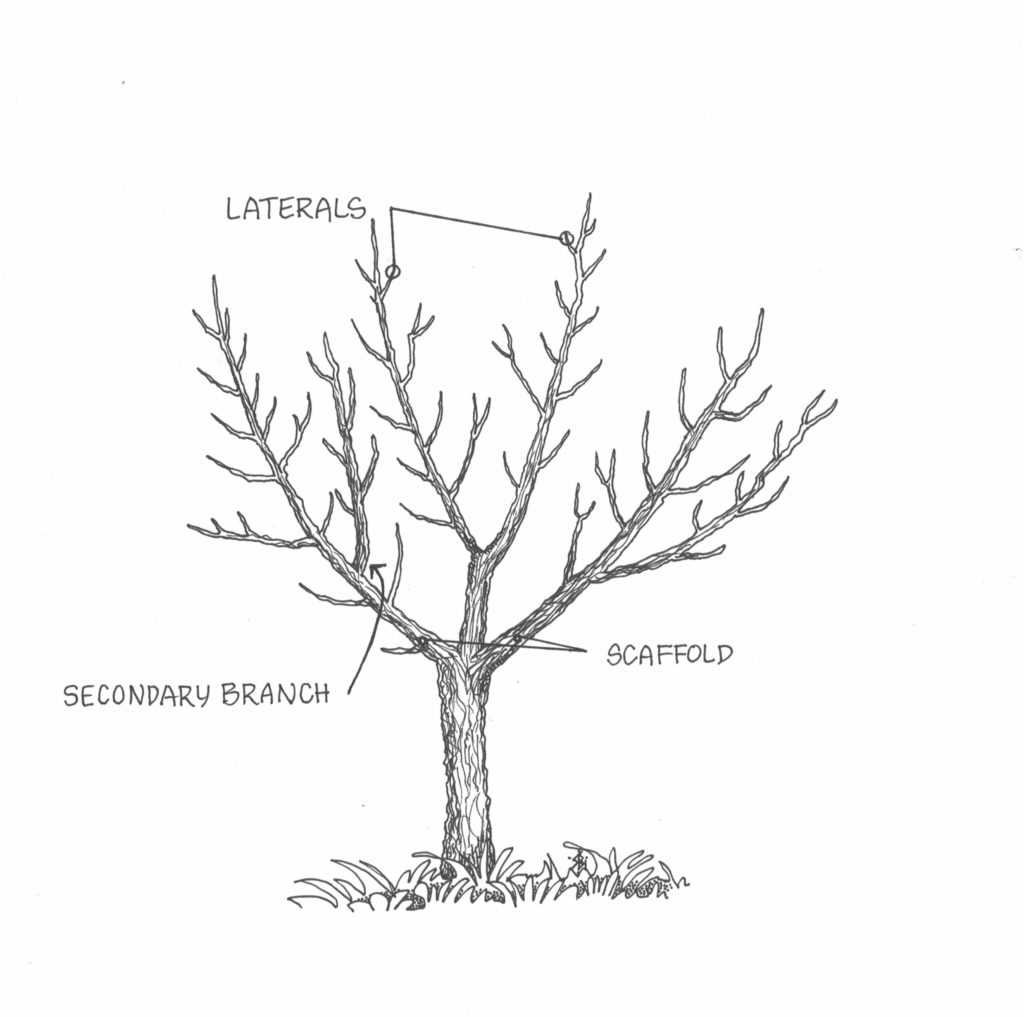
Thinning is an important aspect of plum tree pruning, as it helps to improve air circulation and sunlight penetration. Neglecting thinning can lead to overcrowding and increased susceptibility to diseases. It is recommended to remove overcrowded branches to maintain proper spacing.
5. Ignoring the Central Leader
The central leader is the main trunk of the plum tree, and it plays a crucial role in providing structural support. Ignoring the central leader and allowing multiple competing leaders to grow can result in weak and unstable trees. It is important to train the central leader and prune out any competing branches.
6. Failing to Remove Suckers and Watersprouts
Suckers and watersprouts are vigorous, vertical shoots that emerge from the base or inside the canopy of plum trees. Failing to remove these shoots can divert energy from the main branches and reduce fruiting. It is advisable to promptly remove suckers and watersprouts to maintain the tree’s structural integrity.
7. Neglecting Proper Tools and Equipment
Using inappropriate or dull tools can make the pruning process more difficult and can damage the tree. It is important to use clean, sharp tools such as pruning shears, loppers, and pruning saws for different pruning tasks. Regularly maintaining and sharpening these tools can help ensure clean and efficient cuts.
Avoiding these common pruning mistakes can help promote the growth, health, and productivity of your plum trees. Proper pruning techniques, combined with regular maintenance, will ensure that your plum trees continue to thrive for years to come.
Question-answer:
Why is it important to prune plum trees?
Pruning plum trees is important for several reasons. Firstly, it helps maintain the overall health and shape of the tree. By removing dead or diseased branches, you can prevent the spread of infections and promote the growth of new, healthy wood. Pruning also helps control the size of the tree and keeps it in a manageable shape. Additionally, pruning plum trees promotes better fruit production and quality by allowing more sunlight and air circulation to reach the fruit.
When is the best time to prune plum trees?
The best time to prune plum trees is during the late winter or early spring, before the tree begins to flower and produce new growth. Pruning during this time allows the tree to heal its wounds before new growth starts, reducing the risk of disease and infection. It is important to avoid pruning plum trees in the autumn or late summer, as this can stimulate new growth that may not have enough time to harden off before winter.
What are the differences between pruning stone trees and seed trees?
When pruning stone trees, such as plum trees, the main objective is to maintain the shape and size of the tree, promote better fruit production, and remove any dead or diseased wood. Pruning seed trees, on the other hand, focuses more on thinning out the canopy to allow for better light penetration and air circulation. Additionally, seed trees may require more aggressive pruning to control their size and shape, as they tend to grow taller and wider compared to stone trees.
How should I prune a young plum tree?
When pruning a young plum tree, the goal is to establish a strong, well-shaped framework for future growth. Start by removing any dead or damaged branches, as well as any branches that are crossing or rubbing against each other. Next, select 3-5 main branches that will form the scaffold branches of the tree, making sure they are evenly spaced and well distributed around the trunk. Trim these branches back by about one-third to encourage branching and stimulate growth. Finally, remove any suckers that may be growing from the base of the tree.
Can pruning plum trees help prevent pests and diseases?
While pruning alone cannot completely prevent pests and diseases, it can certainly help reduce the risk. By removing dead or diseased wood, you can eliminate potential breeding grounds for pests and fungal infections. Opening up the canopy through pruning also allows for better air circulation, which can help prevent the development of fungal diseases. It is important to sanitize your pruning tools between cuts to avoid spreading diseases, and to monitor your trees regularly for signs of pests or diseases.
What are some common mistakes to avoid when pruning plum trees?
One common mistake when pruning plum trees is removing too much wood at once. It is best to follow the general rule of thumb, which is to remove no more than one-third of the total canopy in a single year. Removing more than this can put stress on the tree and negatively impact its growth and fruit production. Another mistake is pruning during the wrong time of year, such as pruning in the autumn or late summer, which can stimulate new growth that may not have enough time to harden off before winter. It is also important to use sharp, clean pruning tools and to make proper cuts, avoiding leaving stubs or making flush cuts.







